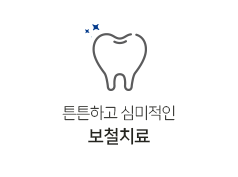**Radiant Detangling Tips for Curly Hair for Beginners**
페이지 정보
작성자 Celsa 댓글 0건 조회 14회 작성일 24-10-25 18:51본문
2. **Detangle in Sections:** Curly hair is often prone to tangling, so it's best to detangle in sections. Start by dividing your hair into manageable sections using hair clips or scrunchies. This will make the detangling process easier and prevent unnecessary pulling and tugging on your hair.
Conclusion:
Protecting natural hair while sleeping is essential for maintaining its health and length. By incorporating these simple tips and techniques into your nighttime routine, you can prevent damage, breakage, and dryness, allowing your natural hair to thrive and flourish. Remember that consistency is key, so develop a bedtime hair care routine that works best for you and stick to it for the best results.
Introduction:
Taking care of natural hair requires more attention and effort compared to other hair types. One crucial aspect of maintaining healthy natural hair is protecting it while sleeping. Proper nighttime routines can prevent breakage, tangles, and damage, resulting in healthier and more manageable hair. In this article, we will discuss useful tips and techniques for beginners to protect their natural hair while sleeping.
1. Understand Your Hair Type:
The first step in finding the right balance of moisture and protein for your hair is to understand your hair type. Different hair types have varying needs when it comes to moisture and protein. For example, curly or textured hair tends to require more moisture, while straight hair may benefit from additional protein. Take some time to assess your hair type and its specific needs before proceeding with any treatments.
Before you can enhance your curl pattern, it is crucial to understand your hair's natural curl pattern. There are various types of curl patterns, ranging from loose waves to tight coils, and each type requires different care and styling techniques. The most common curl patterns are categorized using the Andre Walker Hair Typing System, which includes Type 2 (wavy), Type 3 CGM (Curly Girl Method) salon), and Type 4 (coily).
3. Protect from UV Rays: Just like your skin, your hair can be damaged by UV rays from the sun. Consider wearing a hat or applying a hair sunscreen to protect your curls from sun damage. You can also opt for styling products with UV protection to shield your strands from environmental stressors.
5. Avoid Harsh Materials:
Avoid using harsh materials such as tight elastic bands, rough hair ties, or cotton headscarves that can damage your natural hair. Opt for gentle hair accessories made from satin, silk, or other soft materials to minimize friction and breakage while you sleep.
1. Satin or Silk Pillowcases:
Investing in a satin or silk pillowcase is highly beneficial for natural hair. Unlike cotton pillowcases, which can cause friction and lead to breakage, satin or silk pillowcases are smoother and gentler on the hair. They also help retain moisture and prevent hair from becoming dry and brittle overnight.
Achieving the perfect balance of moisture and protein in your hair is essential for maintaining healthy, strong, and vibrant locks. Too much moisture can lead to limp, weak hair, while an excess of protein can result in dry, brittle strands. Finding the right balance is key to promoting optimal hair health. In this article, we will explore some techniques you can use to determine and maintain the ideal moisture-protein balance for your hair.
2. Protective Hairstyles:
Opting for protective hairstyles before going to bed can help keep natural hair safe from damage. Styles like braids, twists, buns, or pineapple updos can reduce friction and prevent tangles while you sleep. Make sure the hairstyle is not too tight to avoid unnecessary strain on your hair and scalp.
Spring Hair Care Tips:
1. Clarifying Shampoos: Use a clarifying shampoo to remove any buildup or residue that may have accumulated in your hair during the winter. This will help to refresh your curls and prepare them for the coming warmer months.
3. **Use a Detangling Conditioner:** Before you start detangling, apply a generous amount of detangling conditioner to your hair. This will help soften and moisturize your curls, making them easier to comb through. Allow the conditioner to sit on your hair for a few minutes before starting the detangling process.
Curly hair can be stunningly beautiful, but it also requires some special care to keep it looking its best. One common challenge for many people with curly hair is detangling. If you're new to caring for your curls and struggling with knots and tangles, these radiant detangling tips are here to help you navigate the process.
2. Conduct a Strand Test:
A simple and effective way to determine whether your hair needs more moisture or protein is by conducting a strand test. Take a clean, dry strand of your hair and gently stretch it. If the strand stretches easily and returns to its original length, your hair likely has enough moisture. If the strand stretches excessively or breaks, it may be lacking in protein. This test can help you identify which element your hair is lacking and guide your treatment decisions.
Conclusion:
Protecting natural hair while sleeping is essential for maintaining its health and length. By incorporating these simple tips and techniques into your nighttime routine, you can prevent damage, breakage, and dryness, allowing your natural hair to thrive and flourish. Remember that consistency is key, so develop a bedtime hair care routine that works best for you and stick to it for the best results.
Introduction:
Taking care of natural hair requires more attention and effort compared to other hair types. One crucial aspect of maintaining healthy natural hair is protecting it while sleeping. Proper nighttime routines can prevent breakage, tangles, and damage, resulting in healthier and more manageable hair. In this article, we will discuss useful tips and techniques for beginners to protect their natural hair while sleeping.
1. Understand Your Hair Type:
The first step in finding the right balance of moisture and protein for your hair is to understand your hair type. Different hair types have varying needs when it comes to moisture and protein. For example, curly or textured hair tends to require more moisture, while straight hair may benefit from additional protein. Take some time to assess your hair type and its specific needs before proceeding with any treatments.
Before you can enhance your curl pattern, it is crucial to understand your hair's natural curl pattern. There are various types of curl patterns, ranging from loose waves to tight coils, and each type requires different care and styling techniques. The most common curl patterns are categorized using the Andre Walker Hair Typing System, which includes Type 2 (wavy), Type 3 CGM (Curly Girl Method) salon), and Type 4 (coily).
3. Protect from UV Rays: Just like your skin, your hair can be damaged by UV rays from the sun. Consider wearing a hat or applying a hair sunscreen to protect your curls from sun damage. You can also opt for styling products with UV protection to shield your strands from environmental stressors.
5. Avoid Harsh Materials:
Avoid using harsh materials such as tight elastic bands, rough hair ties, or cotton headscarves that can damage your natural hair. Opt for gentle hair accessories made from satin, silk, or other soft materials to minimize friction and breakage while you sleep.
1. Satin or Silk Pillowcases:
Investing in a satin or silk pillowcase is highly beneficial for natural hair. Unlike cotton pillowcases, which can cause friction and lead to breakage, satin or silk pillowcases are smoother and gentler on the hair. They also help retain moisture and prevent hair from becoming dry and brittle overnight.
Achieving the perfect balance of moisture and protein in your hair is essential for maintaining healthy, strong, and vibrant locks. Too much moisture can lead to limp, weak hair, while an excess of protein can result in dry, brittle strands. Finding the right balance is key to promoting optimal hair health. In this article, we will explore some techniques you can use to determine and maintain the ideal moisture-protein balance for your hair.
2. Protective Hairstyles:
Opting for protective hairstyles before going to bed can help keep natural hair safe from damage. Styles like braids, twists, buns, or pineapple updos can reduce friction and prevent tangles while you sleep. Make sure the hairstyle is not too tight to avoid unnecessary strain on your hair and scalp.
Spring Hair Care Tips:
1. Clarifying Shampoos: Use a clarifying shampoo to remove any buildup or residue that may have accumulated in your hair during the winter. This will help to refresh your curls and prepare them for the coming warmer months.
3. **Use a Detangling Conditioner:** Before you start detangling, apply a generous amount of detangling conditioner to your hair. This will help soften and moisturize your curls, making them easier to comb through. Allow the conditioner to sit on your hair for a few minutes before starting the detangling process.
Curly hair can be stunningly beautiful, but it also requires some special care to keep it looking its best. One common challenge for many people with curly hair is detangling. If you're new to caring for your curls and struggling with knots and tangles, these radiant detangling tips are here to help you navigate the process.
2. Conduct a Strand Test:
A simple and effective way to determine whether your hair needs more moisture or protein is by conducting a strand test. Take a clean, dry strand of your hair and gently stretch it. If the strand stretches easily and returns to its original length, your hair likely has enough moisture. If the strand stretches excessively or breaks, it may be lacking in protein. This test can help you identify which element your hair is lacking and guide your treatment decisions.
- 이전글Here Is A fast Cure For Bitcoin 24.10.25
- 다음글мен ағаштар кесіліп жатқанын армандаймын 24.10.25
댓글목록
등록된 댓글이 없습니다.























































